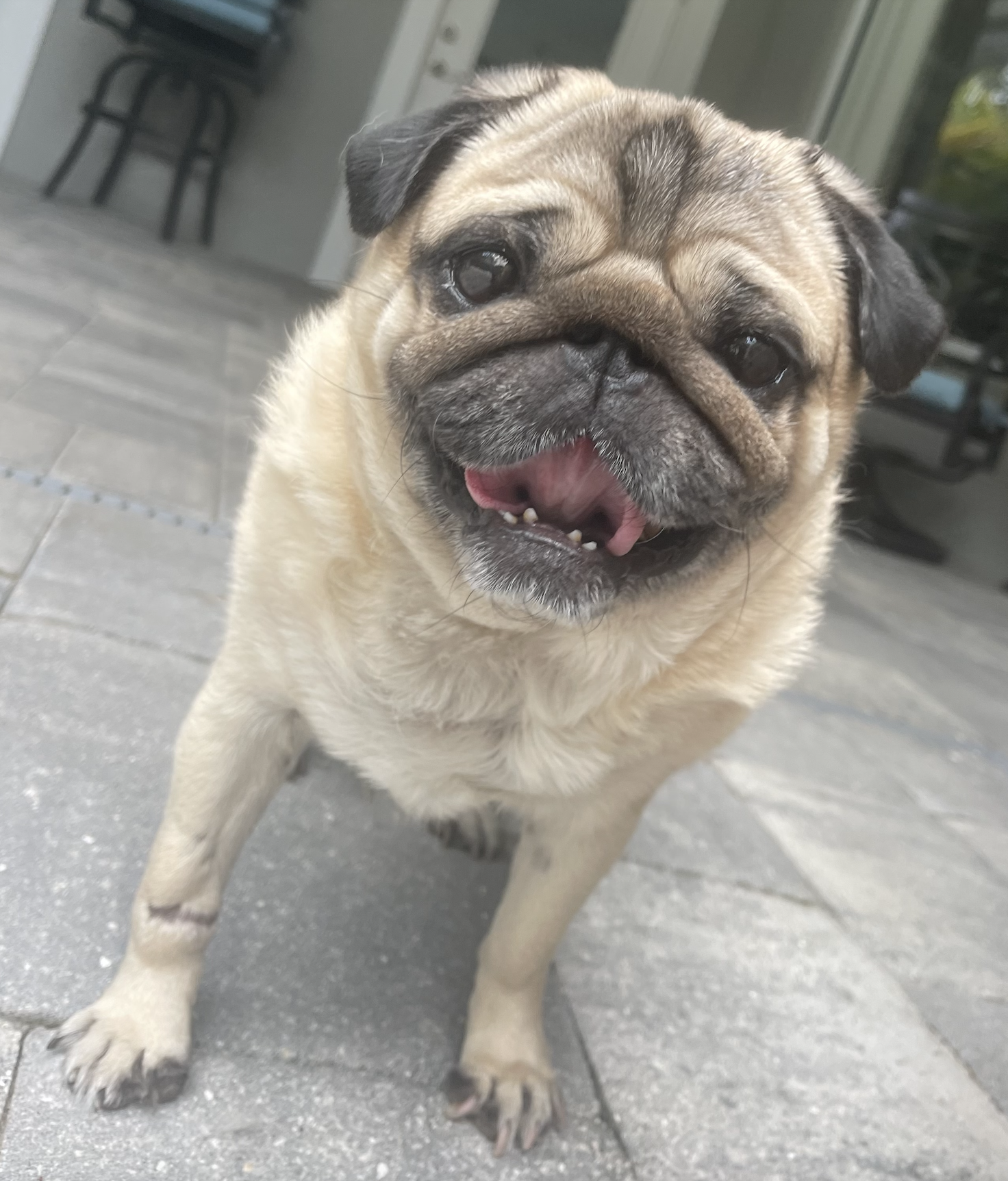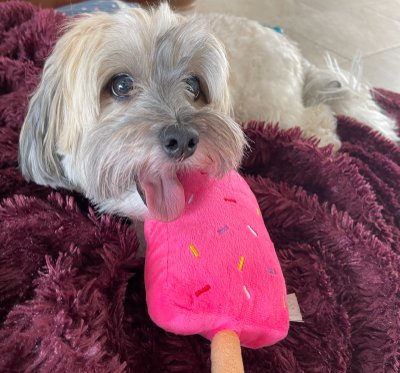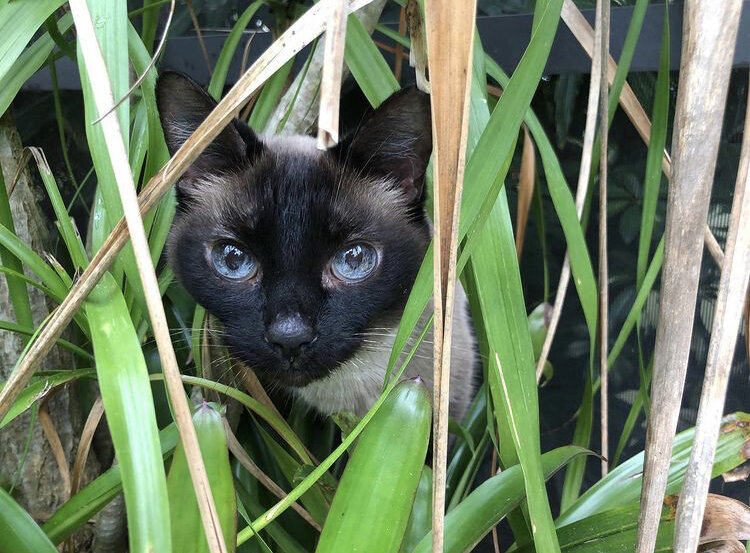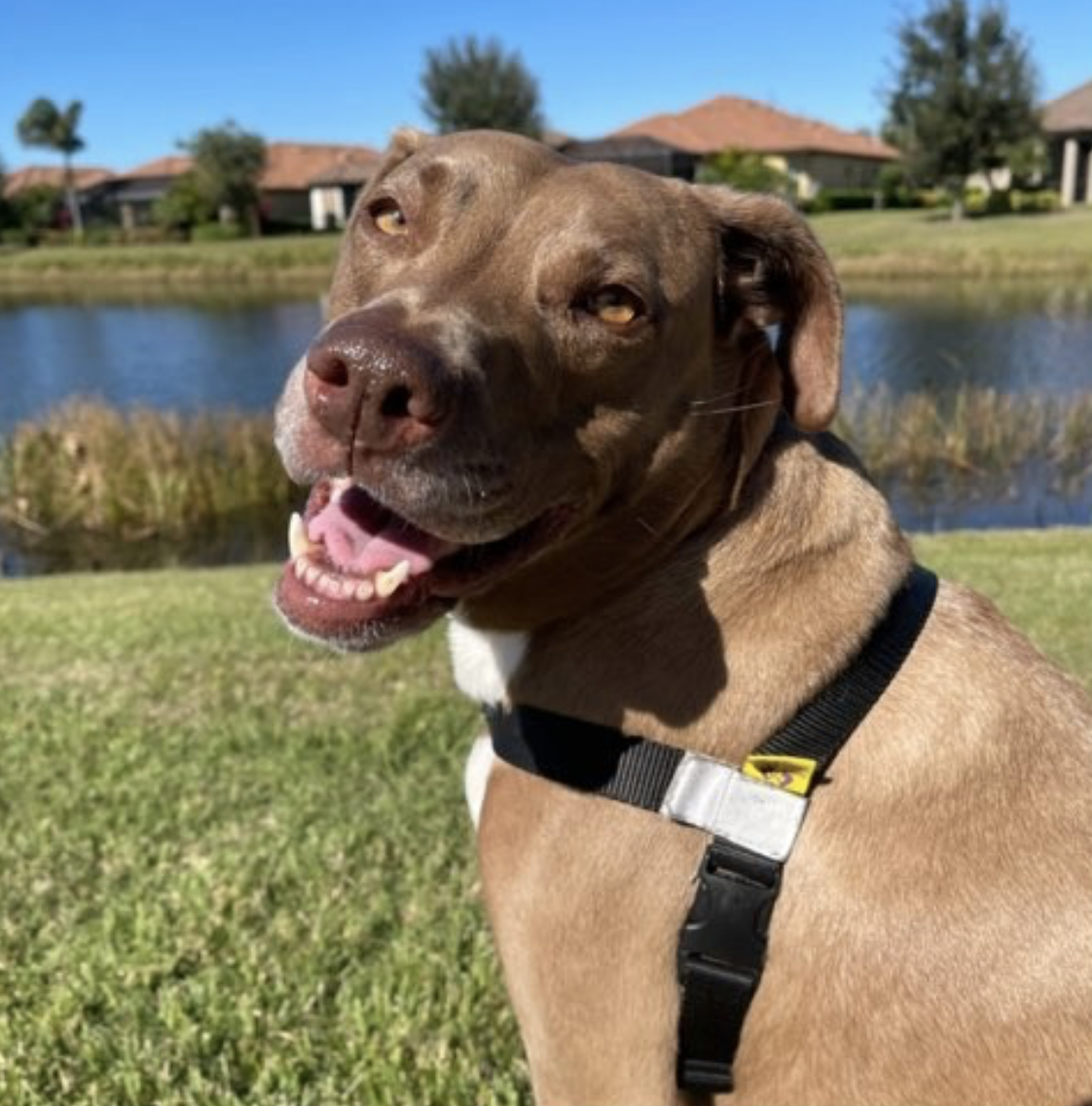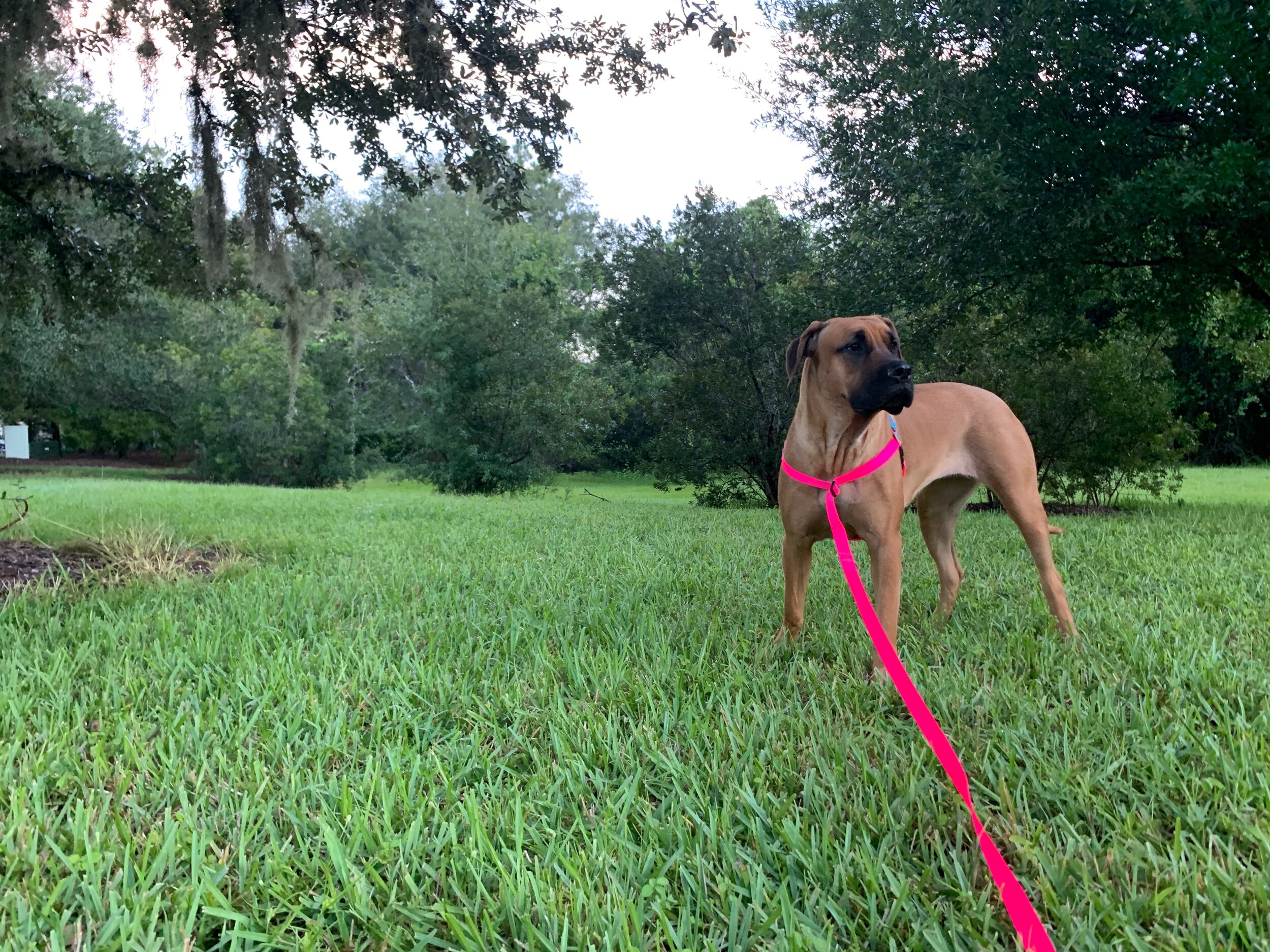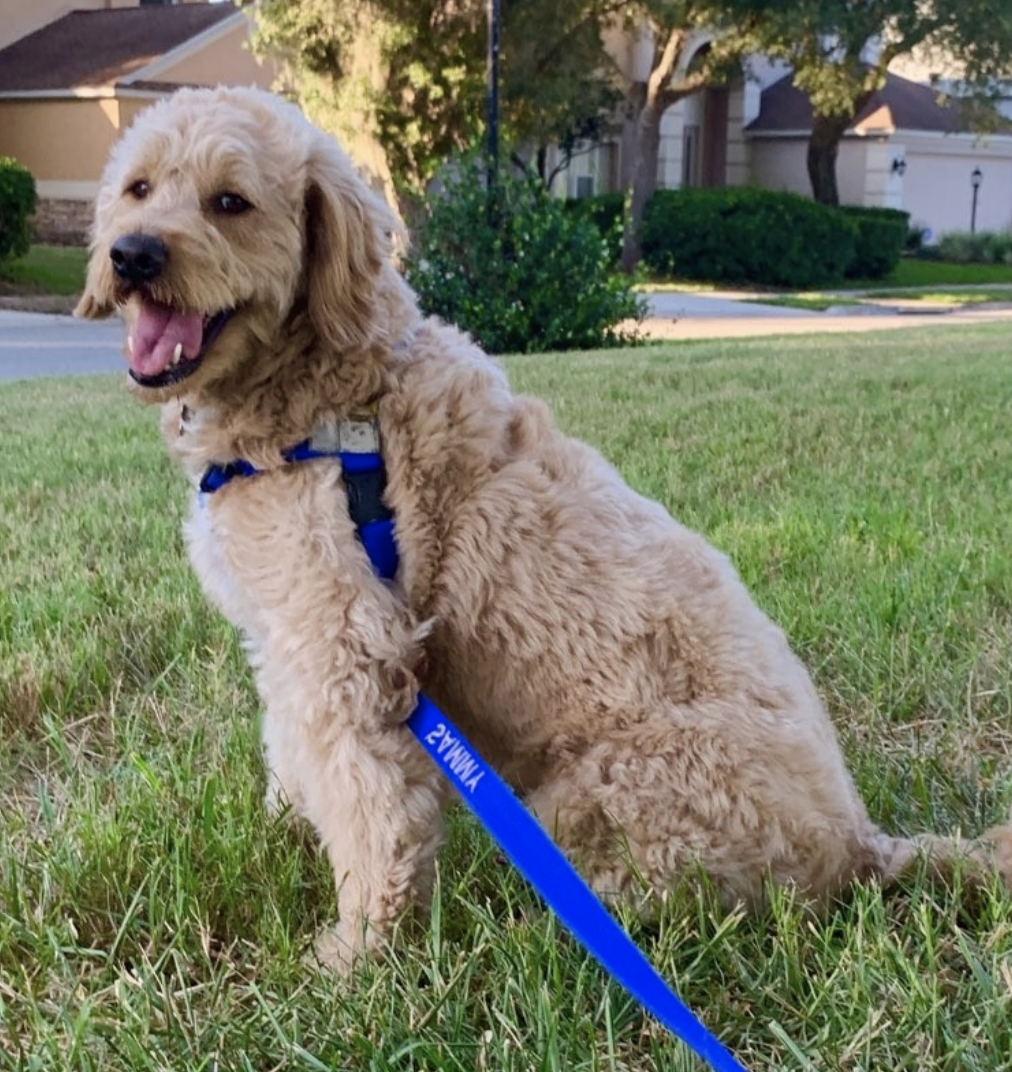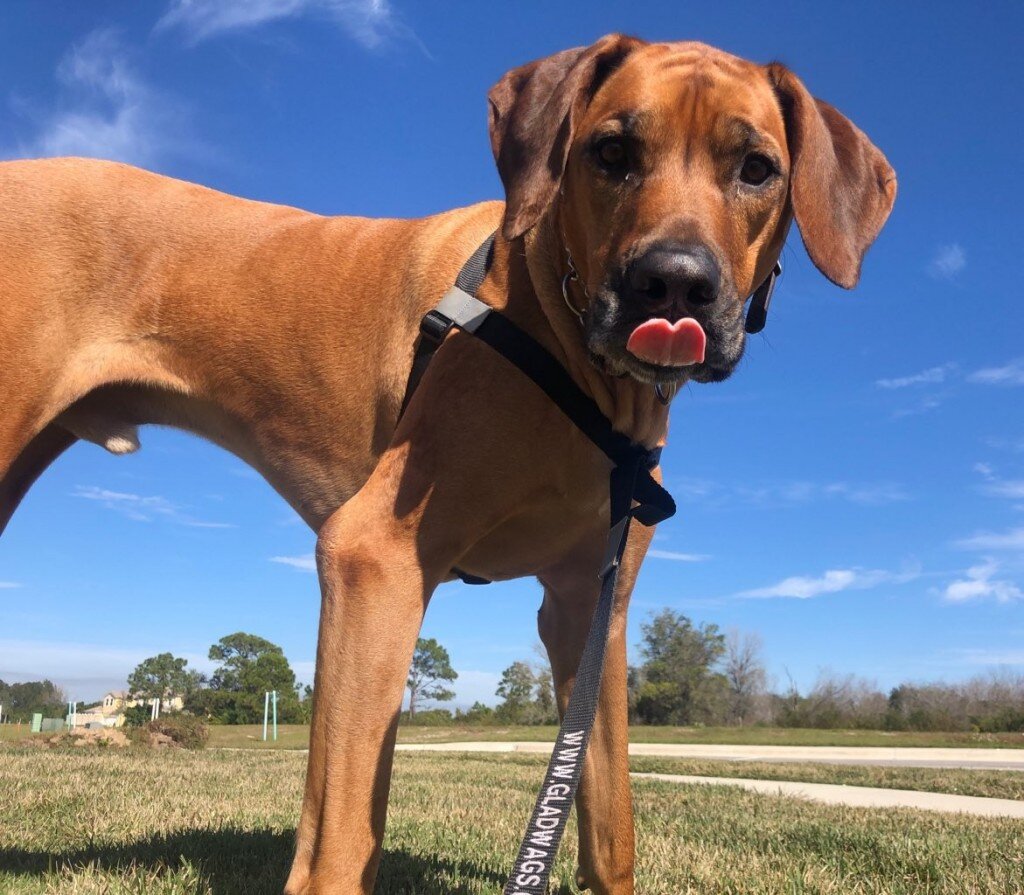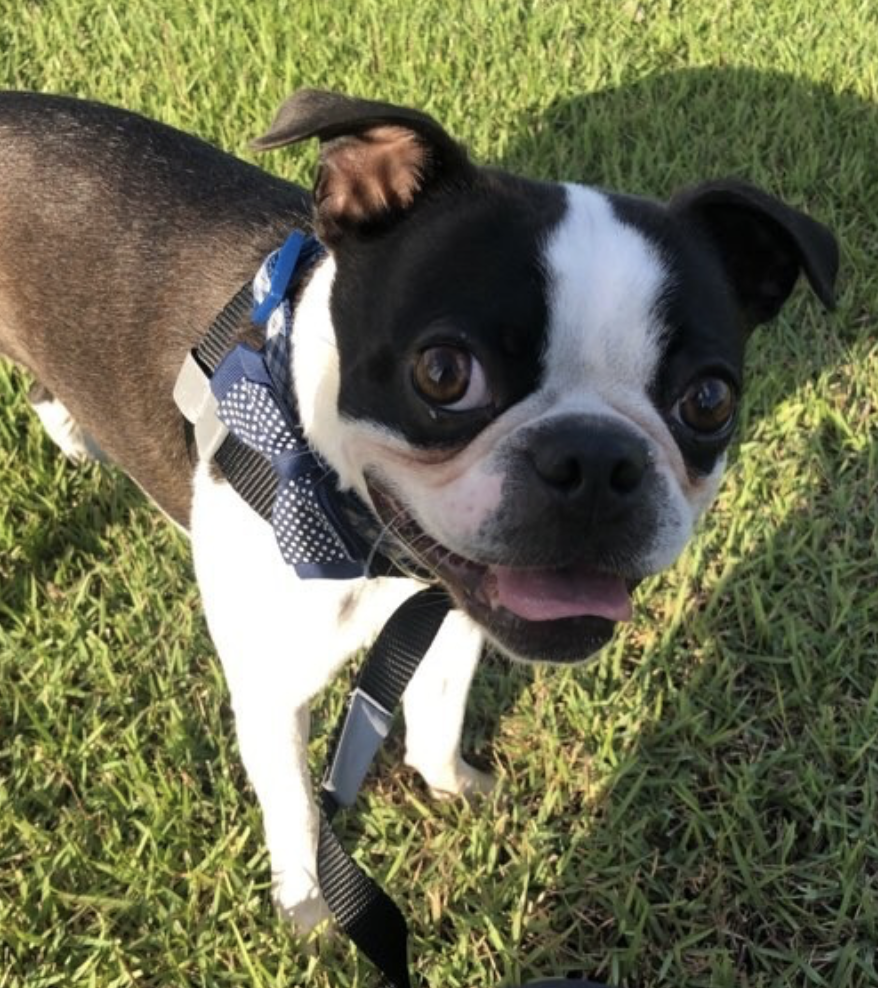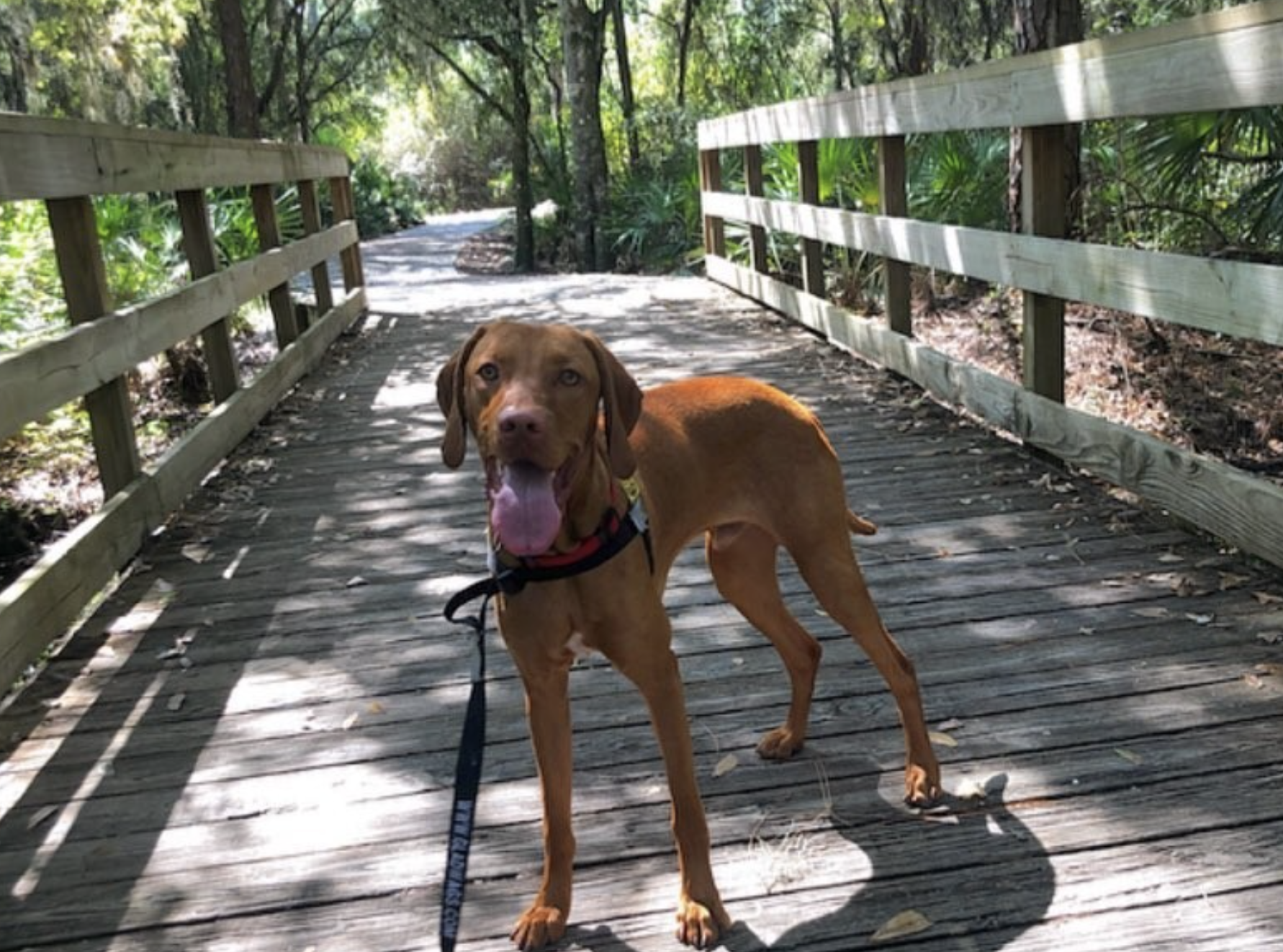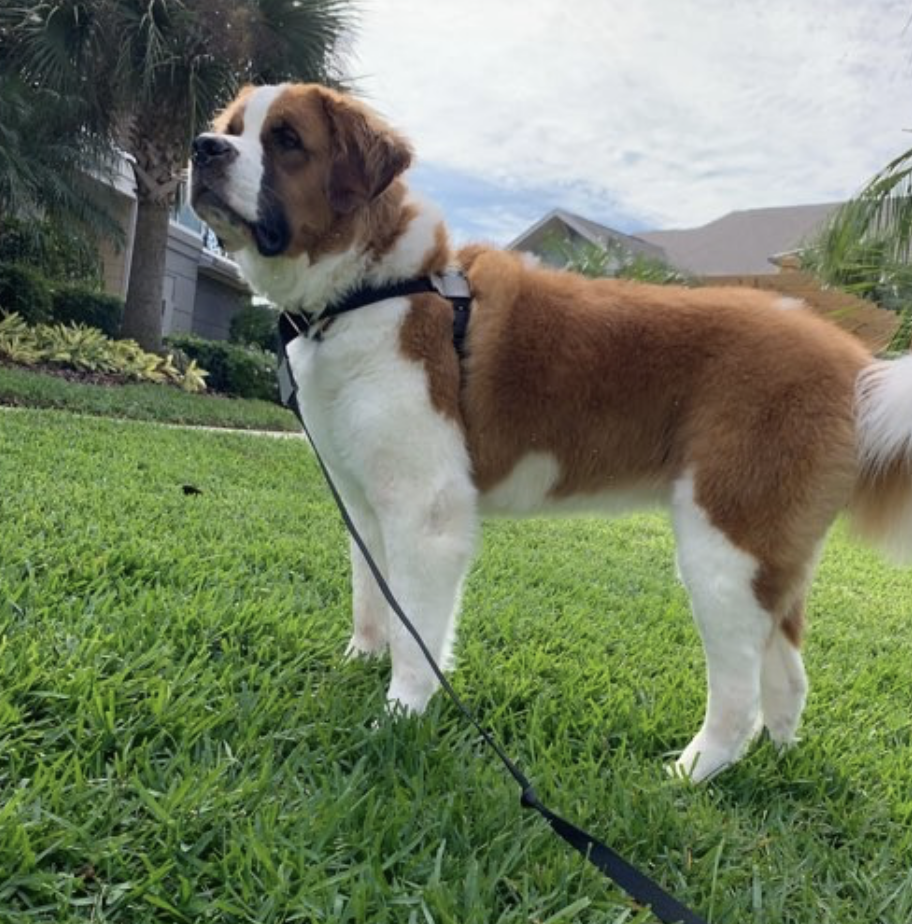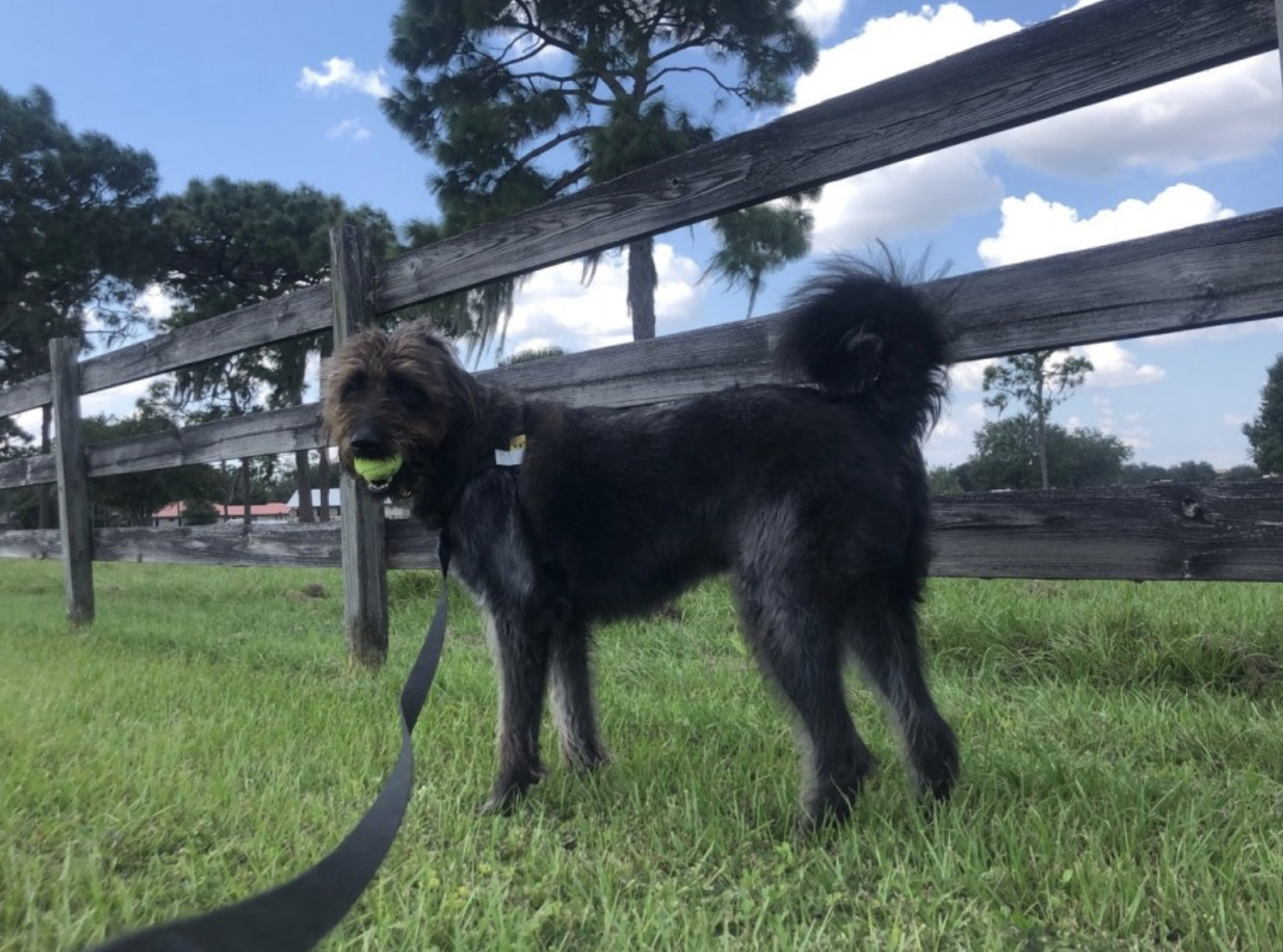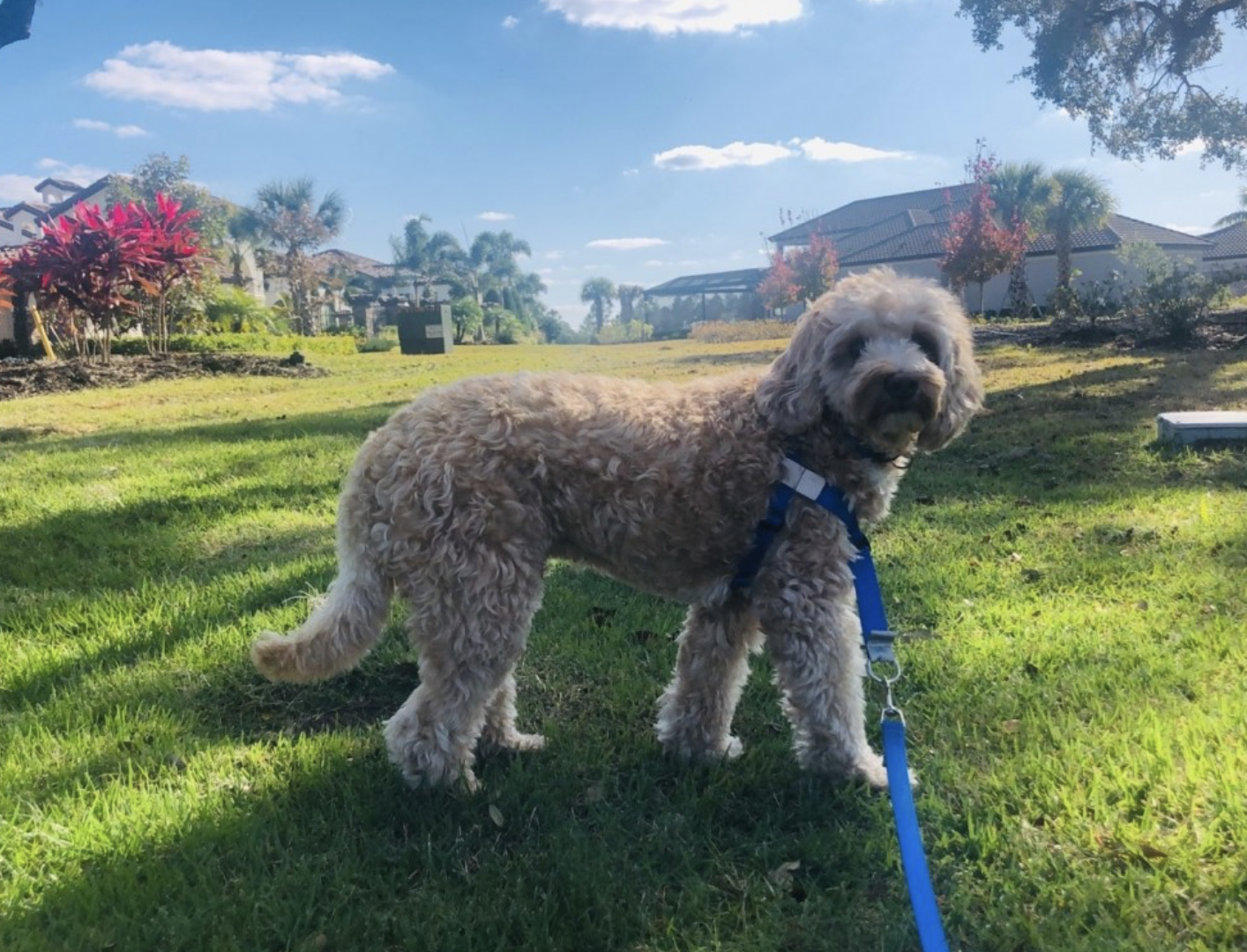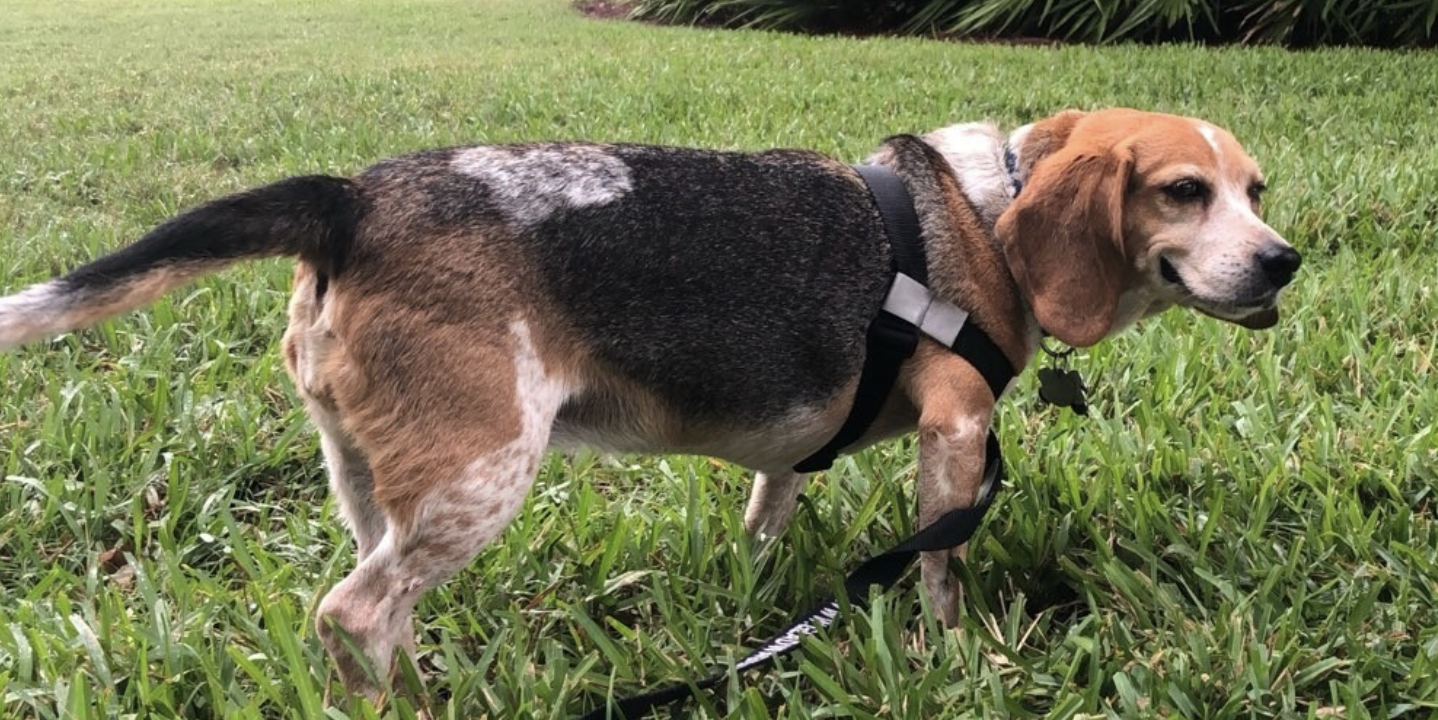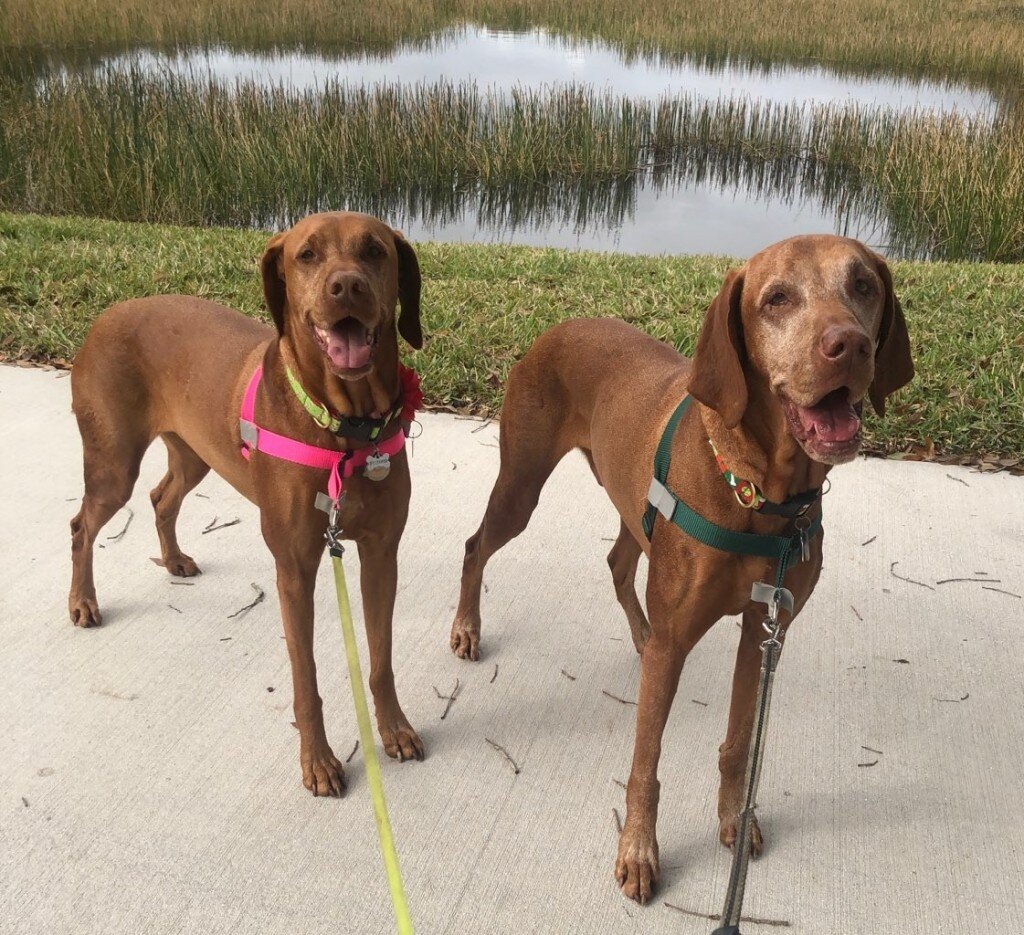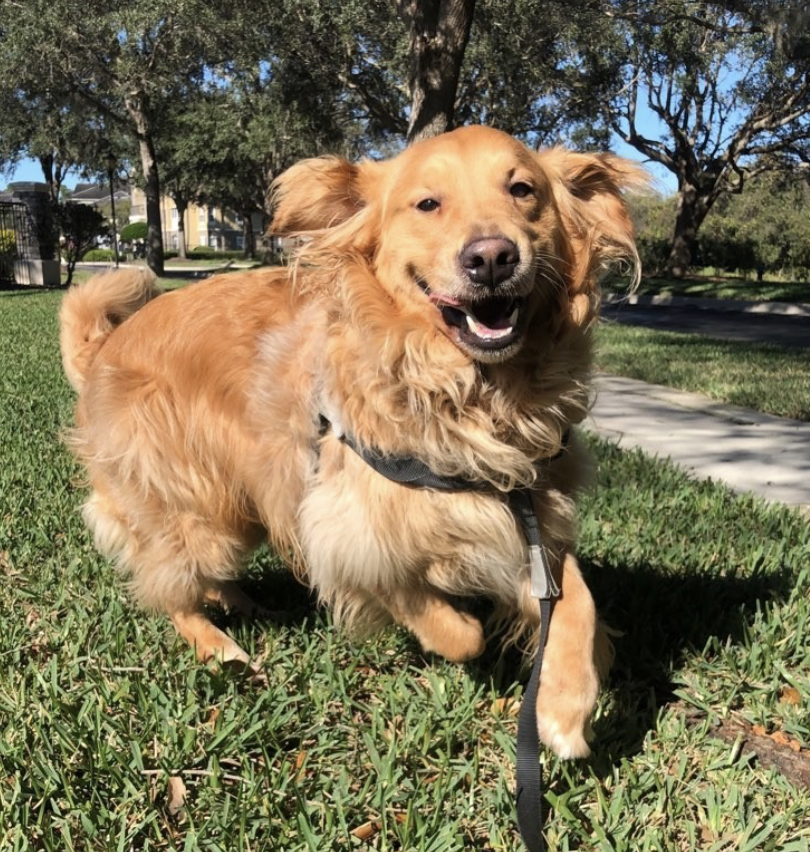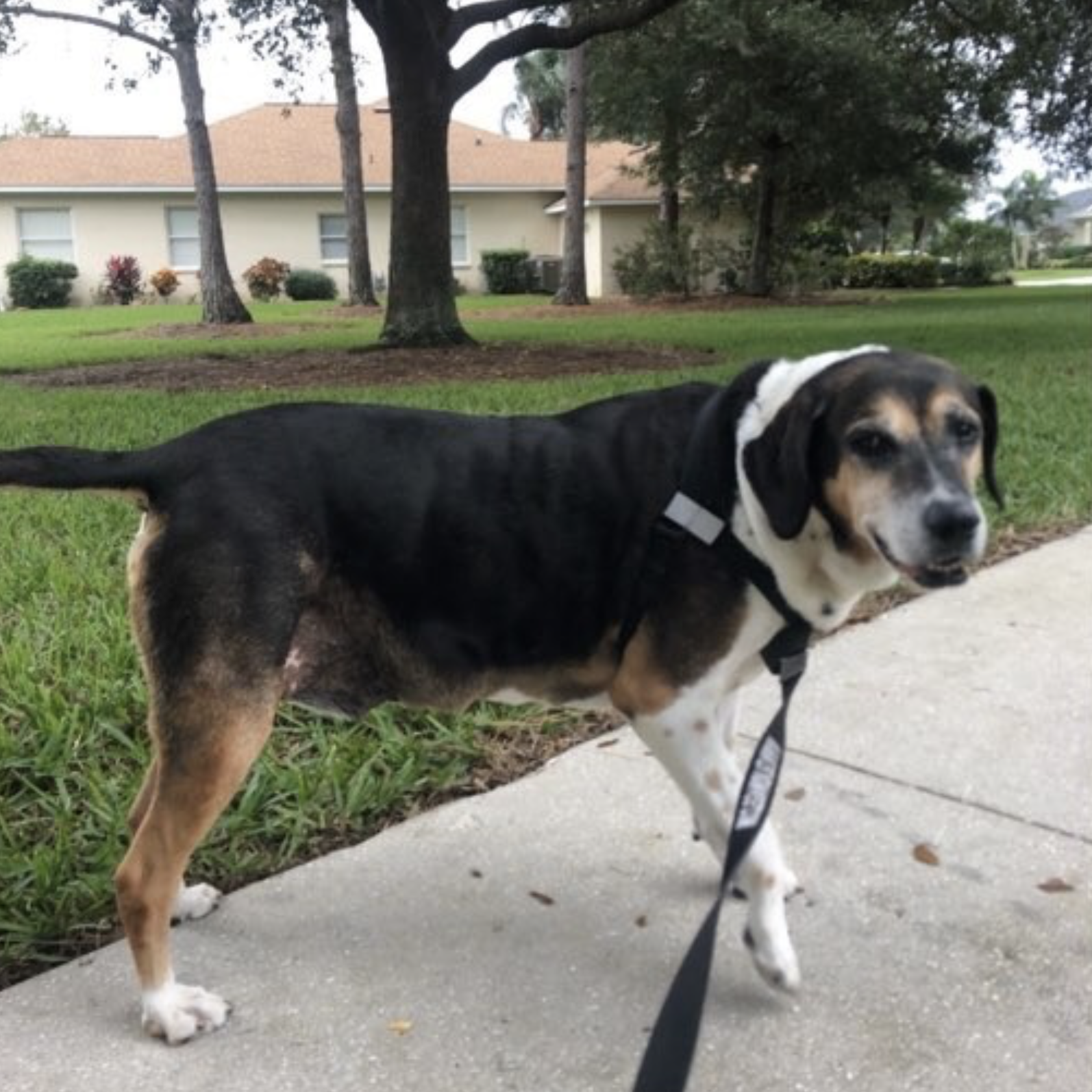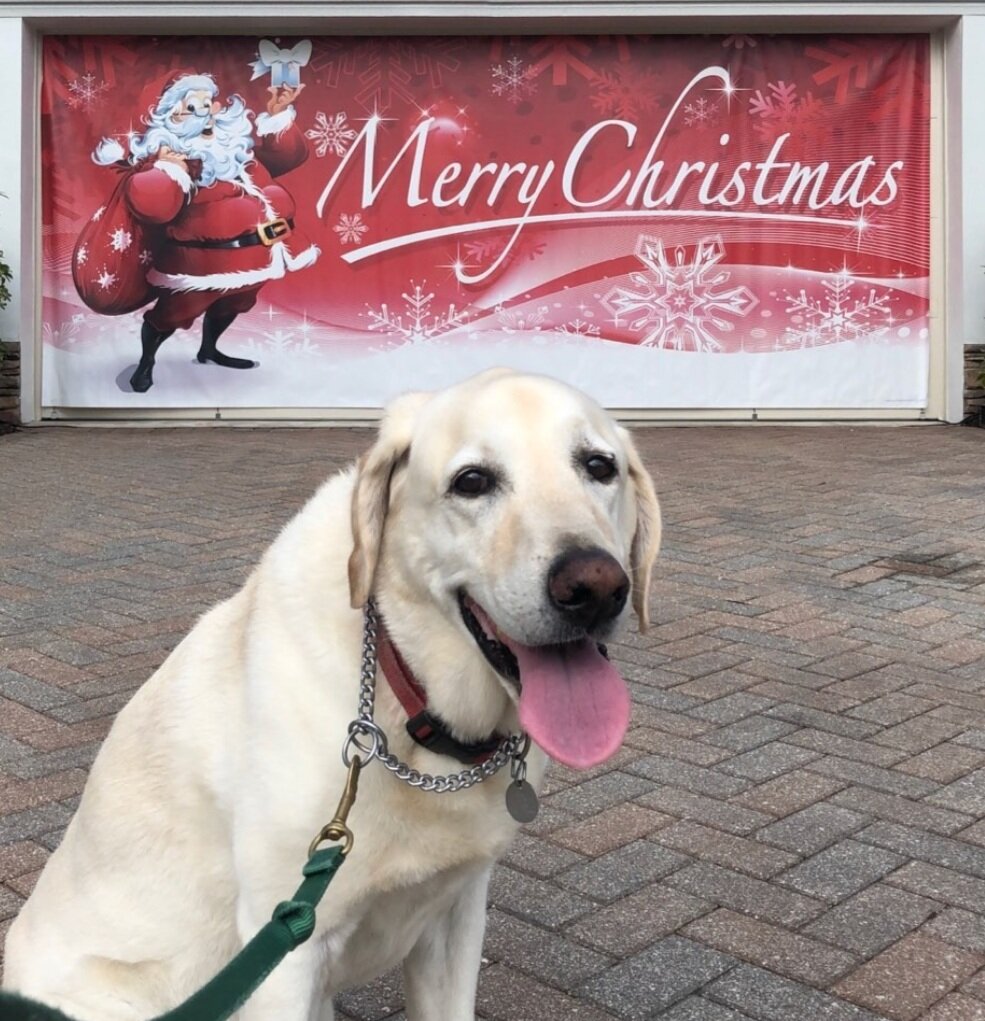11 Holiday Safety Tips For Your Pet
As the holiday season approaches, our homes transform into bustling hubs of celebration. Among the twinkling lights and festive feasts, it's essential to remember the well-being of our beloved pets. While they eagerly partake in the holiday excitement, their safety must remain a priority.
Mind the Decorations: Holiday decorations can be fascinating to our pets but can also be dangerous. Keep a close eye on tinsel, ribbon, and small ornaments that could be choking hazards. Opt for pet-friendly decorations and secure larger ones out of your pet's reach.
Create a Calm Retreat: Holiday gatherings can be overwhelming for pets with all the noise and commotion. Designate a quiet, safe space where your furry friend can retreat when they need a break. Provide comfortable bedding, water, and their favorite comfort items to make it an inviting, relaxing place.
Watch the Door: Holiday gatherings mean more people coming and going from your home. Keep an eye on your pets near the door, as they may try to slip outside, especially if they're anxious or curious about the guests.
Secure the Trash: The aroma of holiday leftovers can be irresistible to pets. Ensure trash cans are securely closed or kept in a pet-proof area to prevent scavenging, which can lead to digestive issues.
Pet-Proof Your Feast: Be cautious about what your pets consume while indulging in holiday feasts. Many human foods, such as chocolate, grapes, onions, and alcohol, can be toxic to pets. A trigger for pancreatitis in our furry friends often stems from the consumption of high-fat foods. During holiday seasons, this can include indulgences such as turkey (especially the skin), fatty leftovers, gravy, bacon, and dishes with butter. Keep festive foods out of their reach and discourage guests from feeding them table scraps. Never give your pet cooked bones. Bones can splinter into shards that injure your pet's mouth and digestive tract. They can also harden in their intestines, causing a blockage.
Be Cautious with Candles: If you're using candles for ambiance, place them out of your pet's reach. Curious pets can knock them over and cause fires or burns. Consider using flameless, battery-operated candles as a safer alternative.
Limit Access to Electrical Cords: Holiday lights and decorations often come with electrical cords that can attract pets. Use cord covers or secure them in a way that keeps your pets from chewing on them, which can lead to electrical shock.
Avoid Harmful Plants: Certain holiday plants, like poinsettias, mistletoe, and holly, can be toxic to pets if ingested. Keep them away, or consider using artificial alternatives to keep your pets safe and your home festive. Curious about which other plants are harmful to your pets? Click here to find out!
Introduce Your Pet to New Faces: If you're hosting guests, especially those with children or other pets, ensure proper introductions with your own pets. Some pets may be anxious around unfamiliar faces, so a gradual introduction can help ease tension. Remind guests, especially children, how to properly interact with your pet to avoid potential anxiety in your pet that may result in a reactive bite or scratch. If your pet isn't fond of company, escort them to their safe space and check on them during the event.
On The Road Again: If the holiday takes you on a road trip, make sure your pet is wearing proper identification, a harness that is secured to a tether or doggy seat belt (do not attach any restraint directly to their collar), or place them in their crate (secured to the vehicle in the event of an accident). Bring food/treats, bowls, water, leash, potty supplies, blanket, medication, first-aid kit, toys, and vet documents. Create a list of emergency vets along your route in case of emergency or illness.
Exercise Your Pal: Be mindful of your pet's need for proper exercise during the busy season. Create a schedule that allows time to care for your pet, or call your local pet-sitting company for assistance!
Resources
VETSS
Why Do Dogs Circle Before Lying Down?
You've undoubtedly observed the routine of scratching, pawing, and meticulous circling your pup performs before settling into slumber. But what lies behind this endearing quirk? Let's dig into the intriguing motivation behind your dog's nighttime or nap-time antics.
You've undoubtedly observed the routine of scratching, pawing, and meticulous circling your pup performs before settling into slumber. But what lies behind this endearing quirk? Let's dig into the intriguing motivation behind your dog's nighttime or nap-time antics.
Getting Comfy: In the wilderness, your dog's ancestors precisely customized their sleeping spots by carefully flattening grass and leaves, eliminating any trace of items that may prick them during the night.
Ensuring Safety: This behavior is also a dance of vigilance and preparedness for the unknown. Through their circling ritual, they position themselves strategically against potential threats. They also align themselves to capture any sensed dangers the wind may carry as a warning. Moreover, these circular movements present an opportunity to scan for potential predators one last time before settling in for sleep.
Assessing the Pack: Circling is a tool for pack leaders to evaluate the group's arrangement and survey the surroundings, ensuring that no individual has fallen out of sight. Interestingly, sleeping in a close dog pile where each touches the other facilitates the pack's communication, signaling wakefulness amongst the pack in the face of danger; when one wakes, it wakes the rest of the pack to potential danger.
Regulating Temperature: Temperature regulation is another skill embedded in this ancient behavior. In warmer environments, the scratching motion unveils cooler soil, while in chillier regions, dogs curl up, conserving warmth. Nature's thermostat, choreographed by instinct!
Too Much Twirling? But what if your dog's twirls transform into an all-night performance? This could be a sign of discomfort or pain. Excessive circling might point to issues like arthritis or neurological challenges such as dementia. In such instances, seeking a veterinarian's guidance becomes essential to ensure your pup's well-being and the restoration of bedtime tranquility.
So there it is—every twirl, every scratch, and each pawing motion creates a bridge to the past, connecting our four-legged comrades with their untamed lineage. As you observe your dog's nightly ritual, remember that beneath the cozy blankets lies a narrative spanning generations—a tale of survival, comfort, camaraderie, and timeless rituals.
References:
VCA Animal Hospitals
Live Science
Hot Weather Safety Tips For Your Dog
Doggos want to be wherever their humans are and if that means outside in the 101 degree Florida sun, that’s where they will be! But, it is important that you look out for your furry friend during the summer months and realize how much the hot weather can affect them. Read over these tips before you head out for a hike with your pooch:
Calling all dog lovers! As the scorching Florida sun beats down, it's essential to prioritize the well-being of your furry friends. While they may want to be by your side no matter the temperature, we must be aware of the impact hot weather can have on them. Get ready to discover some tips to make this summer a breeze for your four-legged family member!
The Most Susceptible: It's important to recognize which dog breeds are less tolerant of heat. While your furry friend's breed may not determine their ability to handle warmer weather entirely, some breeds, such as brachycephalic breeds, are more prone to discomfort. Keep an eye on Bernese, Boston Terrier, Boxer, Bulldog, Husky, Keeshond, Pekingese, Persian, Pug, Shih Tzu, Mastiff, St. Bernard, and Japanese Chin, among others. Additionally, remember that obese and senior pets, as well as those with heart and lung issues, require extra care during hot weather.
Warning Signs: Watch out for signs and symptoms associated with overheating and heatstroke. Increased heart rate, excessive panting, drooling, thirst, reddened gums, vomiting, diarrhea, muscle weakness, and uncoordinated movements indicate that your pup might be struggling with the heat. Stay vigilant to ensure their well-being.
Car Rides: On a warm day, never leave your pet alone in the car. Even at 70 degrees, the interior temperature can soar to a deadly 104 degrees within half an hour. Remember, this can lead to fatal heatstroke for your pet and serious legal consequences for you. Let's keep our furry friends safe and avoid any unnecessary risks (source: heatkills.com).
Coat Care: Contrary to popular belief, shaving your dog's coat doesn't actually keep them cooler. The guard hair (out layer) serves as natural protection against moisture, overheating and sunburn. Cutting the guard hair permanently damages their coat and rarely grows back. So, resist the urge to grab those clippers and let your pup rock their fabulous fur while staying comfortably cool.
HOT PAWS: Imagine walking on hot pavement barefoot—ouch! To spare your furry friend from burnt paws, follow this simple rule: test the pavement first. Place your bare foot or the back of your hand on the ground. If it's too hot to hold for a full 10 seconds, it's too hot for your pup's sensitive paws. Keep them safe and opt for shady or grassy areas instead.
Stay Hydrated: Dehydration is a real concern during hot weather. Ensure fresh water is always accessible to your pets, and remember that they should drink approximately one ounce of water per pound of body weight (source: petmd.com). Consider carrying a collapsible bowl and a water bottle during your outdoor adventures to provide refreshing mid-walk hydration for your furry companion.
Poisons and Picnics: Beware of potential hazards! Avoid areas treated with rodenticides and insecticides, as they can be toxic if ingested by dogs and cats. Keep citronella candles and torches out of reach, as they are also poisonous. Ensure any sunscreen or bug repellent used on your pet is labeled safe for animals. Finally, be mindful of picnic foods that can harm or kill your pet, including raisins, grapes, avocados, onions, chocolate, xylitol, alcohol, garlic, peaches, and plums.
Summer-Time Dangers: Fireworks and dogs don't mix well. The loud noises can be frightening and lead to your dog attempting to escape the noise by running away. Avoid bringing your dog to events where fireworks will be present, especially on July 4th—the top day for reported lost pets. Instead, keep them safe and secure at home during fireworks displays.
Splish-Splash: Supervision is key when your pet is around or in a pool, even if they're good swimmers. Remember that pool water, due to chlorine, is not suitable for drinking. After swimming, thoroughly rinse your dog's coat to remove any harmful chemicals. And if your furry friend is on a boat, always put a flotation device on them for their safety.
With these tips in your arsenal, you can make this summer an unforgettable, safe, and enjoyable experience for you and your furry companion. Don't forget to check out our Pet First Aid Kit blog to ensure you're fully prepared for any potential emergencies. Get ready for some summer fun in the sun with your beloved pooch!
Xylitol Poisoning In Dogs
Stash your gum and check your peanut butter label because there is a commonly used ingredient called xylitol in many foods and products made for human-use. Xylitol, also known as birch wood, is often seen in sugar-free desserts, certain peanut butters, and even baby wipes.
Stash your gum and check your peanut butter label because there is a commonly used ingredient called xylitol in many foods and products made for human-use. Xylitol, also known as birch wood, is often seen in sugar-free desserts, certain peanut butters, and even baby wipes.
It doesn’t take much to cause harm to your pooch. For example, one piece of gum is toxic to a 10-pound dog!¹ This sugar can make its way into the paws of many pups since it is frequently used, and humans tend to be unaware of its hazards to dogs. If you are a dog pawrent, educate yourself on this important pet-safety topic now!
What is it and why is it dangerous: Xylitol is a natural sugar derived from plants that has a very sweet taste, can keep items moist, and is heat-stable, which means it doesn’t carmelize.³
People can ingest xylitol because it doesn’t cause a change in blood sugar, making it a popular sugar substitute. Unfortunately, in canines it has the opposite effect. When a dog ingests xylitol, it is absorbed quickly and signals the pancreas to release a large amount of insulin, resulting in a sudden drop in blood sugar that can lead to a number of side effects, including death.
Products commonly containing xylitol:
Dental products: gum, toothpaste, mouthwash, breath mints
Toiletries: shampoo, moisturizer, deodorant, baby wipes, sunscreen, cosmetics
Medicines: cough syrup, cough drops, nasal spray, chewable/gummy vitamins
Foods: peanut butter, fruit drinks, drink powder, jelly/jam, cereal, Jell-O, ketchup, syrup, sugar-free desserts, and ice cream
700+ products containing xylitol can be viewed by clicking here
This is an emergency!: If you suspect your dog has ingested xylitol, you should immediately have your dog evaluated and treated by a veterinarian. Left untreated, this can quickly turn into a life-threatening event.
Pet Poison Number: 800-213-6680
Symptoms: Signs of hypoglycemia (low blood sugar) may appear 10 mins after ingestion, while in others cases, it could take over 24 hours for a sign or symptom.
Vomiting
Loss of balance
Stumbling
Weakness
Lethargy
Depression
Tremors
Seizures
Collapsing
Lack of coordination
Coma
How common is ingestion?: The Pet Poison Helpline reported a 108% increase in calls regarding xylitol poisoning between 2015 and 2020, and their database has more than 20,000 cases between 2013-2020! ²
Other names: Xylitol can be listed as “inactive ingredients” or “other ingredients” on product labels. It isn’t always listed as xylitol and may be disguised under a different name, such as²:
Alcohol Sugar
Birch Sugar
Wood Sugar
Birch Bark Extract
CHO
E967
Meso-Xylitol
Méso-Xylitol
Pentahydric alcohol
Penta-hydroxy
Pentane
Sucre de Bouleau
Wood Extract
Xilitol, Xylit, Xylite
Xylo-pentane-1,2,3,4,5-pentol
In the news: Currently, steps are being taken to minimize the amount of this type of poisoning as cited from Whole Dog Journal, “…bipartisan legislation (called the Paws Off Act of 2021) that would require manufacturers of any product containing xylitol to include a warning label has been introduced in Congress.”³
References:
1.) AKC
2.) Dr. Beth Turner
3.) Whole Dog
How To Dog Proof Your Home While You're Away
Whether your dog is a puppy, a newly adopted pup, or a dog that’s been part of the family for years, be sure to add, “dog proof the house” to your to-do list before you’re off on your next vacation. Doing so can save you money on household damages or even more importantly, a trip to the vet when you buddy “got into something. No worries, we’ve got you covered!
Whether your dog is a puppy, a newly adopted pup, or a dog that’s been part of the family for years, be sure to add, “dog proof the house” to your to-do list before you’re off on your next vacation. Doing so can save you money on household damages or even more importantly, a trip to the vet when you buddy “got into something.
No worries, we’ve got you covered:
Sweet pup anxiously awaiting his treat from his Glad Wags’ sitter.
Nom-noms: Stash away all food, including their own, so they aren’t tempted to counter-surf. Pay close attention to hiding away toxic foods such as chocolate, avocados, grapes, raisins, macadamia nuts, onions, and garlic. For a more complete list of toxic foods, visit the ASPCA website by clicking here .
PRO TIP: If you are the parent to an expert counter-surfer, consider putting foil on your countertops. Once Buddy places his paws on the loud material he will be less inclined to continue. You might also try lining your countertop with double-stick tape. Pups don’t like the sticky tape and are likely to stay away.
Get to the point: Securely put away anything sharp that your little rascal may snatch up such as knives, scissors, razors, blades from a blender or food processor, box cutters, and pins.
Sweat the small stuff: Twist ties, bread clips, rubber bands, batteries, buttons, hair-ties, jewelry, thread, crafts, or anything tiny can be enticing to a doggo who is left unattended. Although these things seem harmless, they can get lodged in your pup’s throat or digestive tract.
Lakewood Ranch is full of beauty, even on the side of a neighbor’s recycling bin!
A load of rubbish: Secure your trash cans! Take the trash out before you leave or figure out a way to keep Buddy’s nose out of the trash’s business. Some common solutions are putting it in a pantry/cabinet or placing a gate around it.
PRO TIP: Don’t forget about the small trash bins in bathrooms and offices; these can be even more dangerous because they don’t often have a lid and can contain dangerous items such as floss or old razors!
Down to the wire: Cords, wires, and chargers are popular items for pups to chew on and can be very dangerous as they can electrocute and burn your fur-friend. If possible, unplug any devices that your pup will have access to. Consider tucking the cords under cord concealers or completely removing the items from the room. It may be a time consuming task but this is a very important one!
PRO TIP: If you think your pup will mess with the outlets, try using outlet covers.
Comfy cozy: Pups can look at blankets, rugs, and fabric armrest coverings as big toys. If you think Buddy will go after the couch cushions and pillows, block off couches with dining chairs or limit their access to rooms with these pieces.
Dapper boy is always stylin’ in one of his bow-ties!
Best dressed: Depending on what type of packer you are, you might leave your clothes spread out on the floor or leave behind a pile of dirty laundry in your hamper. We won’t add “do laundry” to your to-do-list but at least put all your clothing out of reach from your pup, particularly dirty laundry. They enjoy working on (aka chewing on) buttons, strings, and zippers, stinky socks, and the all-time favorite….shoes! Save your clothes, shoes, and your dog’s intestines and stow these types of things far from reach.
Pick your poison: Our homes are filled with toxic hazards such as cleaners, detergents, bleach, moth balls, pesticides, medications, cosmetics, perfumes, and toiletries. Keep these types of items far, far away from your solo pup. Put them in a closet they do not have access to or a high cabinet that has some type of lock on it. Check out these child-proof cabinet locks that can also be used for nosey noses snooping around.
Fast friends: If you have small critters in the house, such as fish or hamsters, think about moving them to a new location if you aren’t sure how your pup might do alone with them.
Having a snooze after her outside time.
Beauty sleep: Some owners like leaving their bedroom open for access during their time away because Buddy likes having a snooze on their bed. Some canines love to tear up anything soft (uh, have you seen what they can do to a stuffie toy) so not granting them access to your bedroom would be ideal. But, if you are still adamant about having them keep your bunk warm, remove your pillows, quilts, comforters, sheets to spare them from becoming the next casualty!
Potty mouth: Shut your toilet lids! Although your pup doesn't care about manners, the latrine lid should stay closed. The chemicals used to clean the toilet can make a thirsty pup very sick. Tiny pups could even drown in the bowl! If your headstrong bud knows how to lift the seat, try one of these nifty devices.
PRO TIP: As gross as it is, Buddy might raid the cat’s litter box. If this is on your dog’s favorite foods list, find a home for the box that Buddy can’t get to.
Blind spot: Vertical blinds, particularly ones made of fabric, sway side to side and can become quite a tempting toy! Block these strips with chairs if possible.
Playtime with one of his favorite toys!
Toy story: Leaving Buddy’s toys out is very important but if your pup is likely to rip up their toys (which is fine) first remove any squeakers, strings, and stuffing, if you believe your pup will consume it after it’s ripped up.
Reality TV: Hide your remotes!! You’ll thank us.
Pretty as a picture: Figurines, vases, and any decor that is within reach (even as high as your dog can reach on his hind legs) should find a new home while you’re away.
Arts & crafts: Have you ever seen what a pup can do with newspapers, magazines, books, cash money, paper towels, napkins, or toilet paper? They can create homemade confetti in seconds flat! Double check that you put away all these tempting paper products.
Fresh Air: Air fresheners & candles are a big “no-no” for pets when home alone. Your pup is more important than a nice smelling house.
Handsome Havanese posing during a Glad Wags’ walk.
Green thumb: Many pet owners are the parents to indoor house plants too but you will be disappointed to find your plants dug up and even consumed. Move these plants to an off-limits room, even succulents are fair game to Buddy! Non-toxic plants can still cause lesions in the digestive tract. For a full list of toxic plants, check out our Toxic Plants and Flowers To Avoid For Dogs And Cats blog.
Off limits: If doggie proofing your home is still not enough to save your stuff, try limiting the space in which your dog is allowed to roam. Close doors and only allow access to the main living area. If you need to limit space even further, put your pup in a large penned area of the house.
PRO TIP: Remember that a tired dog is a good dog so be sure to use a sitter who can tire your dog out physically and mentally.
Toxic Plants and Flowers To Avoid For Dogs And Cats
As a pet parent, it’s very important to be knowledgeable about which plants and flowers could be dangerous to your puppy pals and feline friends. Below is a list of the most common toxic plants that are dangerous for pets to consume.
Please note, this is not a complete list of all poisonous plants.
As a pet parent, it’s very important to be knowledgeable about which plants and flowers could be dangerous to your puppy pals and feline friends. Below is a list of the most common toxic plants that are dangerous for pets to consume.
Please note, this is not a complete list of all poisonous plants.
Adam-and-Eve
Aloe
Amaryllis
Andromeda
Apple
Apricot
Arrow-Head Vine
Arum
Arum Lily
Australian Nut
Autumn Crocus
Azalea
Barbados
Basil
Bay Laurel
Bead Tree
Begonia
Bird of Paradise
Bittersweets
Brazilwood
Boxwood
Brunfelsia
Buckeye
Buckwheat
Buddhist Pine
Burning Bush
Buttercup
Calla Lily
Caladium
Cape Jasmine
Cardinal Flower
Carnation
Castor Bean
Ceriman
Chamomile
Cherry
Chinaberry
Chives
Chrysanthemum
Cilantro
Clematis
Coffee
Coontie Palm
Creeping Charlie
Cycads
Cyclamen
Daffodil
Daisy
Dieffenbachia
Dracaena
Dumbcane
Easter Rose
Eastern Star
Elephant Ears
Epazote
Eucalyptus
Exotica
Fern Palm
Fig
Figwort
Flag
Flamingo Flower
Foxglove
Gardenia
Garlic
Geranium
Gladiola
Grapefruit
Heavenly Bamboo
Holly
Hops
Horse Chestnut
Horseweed
Hosta
Hyacinth
Hydrangea
Indian Hemp
Iris
Ivy
Jack-in-the-Pulpit
Jonquil
Kalanchoe
Kiss-me-Quick
Klamath Weed
Lambkill
Lantana
Larkspur
Laurels
Lavender
Leek
Lemon
Lemon Grass
Lenten Rose
Lillies
Lime
Lobelia
Maidens Breath
Marijuana
Milkweed
Mint
Mistletoe
Morning Glory
Mother-in-Law
Mum
Nandina
Narcissus
Nightshade
Oleander
Onion
Orange
Oregano
Parsley
Peach
Peony
Perennial Pea
Periwinkle
Pieris
Plum
Poinsettia
Poison Daisy
Poison Hemlock
Poison Parsnip
Portulaca
Prayer Bean
Primrose
Privet
Purslane
Ragwort
Ranger's Button
Red Emerald
Red Maple
Rhododendron
Rhubarb
Ribbon Plant
Rock Moss
Rosebay
Running Myrtle
Sabi Star
Sago Palm
Silver Dollar
Snake Lily
Sorrel
SowBread
Spanish Thyme
Spindle Tree
Spring Parsley
Staggerbush
Starch Root
Starleaf
Sweet Pea
Taro
Tobacco
Tomato
Tulip
Weeping Fig
White Heads
Wild Arum
Winterberry
Wisteria
Yarrow
Yew
Yucca
ASPCA Animal Poison Control Center Phone Number: 888-426-4435
What To Do When Your Dog Jumps On You
Knowing how to react to your dog jumping on you is super important because our initial response tends to be the incorrect one. Whether you are the owner of a jumping pup or you have a friend who is trying to break their pooch of a hopping habit, it’s important to know how to react when the pup turns into a jumping bean.
Family of four with all four paws on the floor, waiting patiently for attention
Knowing how to react to your dog jumping on you is super important because our initial response tends to be the incorrect one. Whether you are the owner of a jumping pup or you have a friend who is trying to break their pooch of a hopping habit, it’s important to know how to react when the pup turns into a jumping bean.
Why do dogs jump in the first place? The main reason unwanted jumping occurs is simple: human attention. At some point in your pup’s life, they jumped on a human to catch their attention, and guess what, it worked! They get the attention in many ways, pets, ear scratches, all the things they love the most. So naturally, the dog made the association.
Dog thought: “Jump on human = get attention. I’m always going to jump on humans because I LOVE attention!”
Small, medium, or large, all sizes can learn to keep their paws to themselves
Then as the puppy gets bigger, it is deemed unwanted behavior by the owner, but the dog thinks everything is just fine the way it is because he still receives the attention he’s seeking.
Read on for tips on fixing this problem behavior.
IGNORE
Sweet sibling pups demonstrating “all-four-on-the-floor”
The best thing you can do while a pup is jumping on you is to completely ignore them! As cute as they are when looking up at you, you must resist the urge to pet and talk or give any type of positive attention to them until they have “all-four-on-the-floor”! Do not touch them, talk to them, or even look at them. Stand still, arms folded, staring in the distance. Essentially, become boring. Your calm and quiet energy is vital. If your pup jumps on you while you are sitting, stand up and ignore them.
IMPORTANT! Avoid giving them negative attention, too. A pup, much like some humans, value any type of attention. If you are reprimanding or pushing them off, the result is the same - they got your attention and will continue the behavior.
THE COLD SHOULDER
This rottie gal is the queen of the polite sit
If standing silently without eye contact and interaction is still not working, turn your back to them. A quiet, still, disengaged human is very boring to a dog (insert big dog yawwwwn) and they will eventually lose interest in you or at least calm down enough to stop jumping on you.
Let your guests know that you are training your dog and to please not give them any attention until they are calm. This is hard for humans to do because we’re thinking like a human and think it might be rude to ignore the dog, just as it’s rude to ignore a person, especially when you’re a guest. That’s why giving your guest permission to ignore your dog is so important.
RE-ENTER
In some cases, ignoring them and giving them the cold shoulder may not work if the dog has been conditioned to jump for attention. Take the training to the next level by completely leaving the room or the house when your pup pounces. If he jumps, go out the door. Then, re-enter. If he jumps again, leave through the door again. You might have to do this many, many times before he learns that he’ll receive no attention from anyone that comes through the door if he jumps on them. Consistency and patience will pay off!
GIVE ATTENTION
Not only is it important to know when not to give attention, it is equally important to know when to reward your pup with attention. Once he has all four paws on the floor, preferably in a sit, you can and should give attention immediately to reinforce the wanted behavior. But, be prepared to go back to step 1 if they start to jump again.
Boston siblings showing off how well-mannered they are!
BE CONSISTENT
This type of training is only effective if the owner puts in consistent effort. Everyone in the household, including friends, family members, and even acquaintances and service providers, should be told by the owner the steps to take once your pup starts springing up like a pogo stick. Insist that your pals (and you) follow the protocol, which is to ignore the dog if they jump. Soon your pup won’t be tempted to give an airborne greeting, and you won’t be embarrassed by their behavior.
The Best Dog Harness For Pullers
There are many dog products on the market and with endless options, it can become overwhelming when deciding on what to use to walk your dog, particularly if you have a pup that pulls. As dog walkers, we have experienced just about every product on the market and we are going to share with you our #1 pick, especially if you have a “puller”.
With so many dog walking products on the market, it can be overwhelming when deciding what to use to walk your dog, particularly if you have a pup that pulls. Glad Wags’ dog walkers have hands-on experience using just about every style on the market and we are going to share with you our #1 pick, especially if you have an extreme puller of any size or breed.
Parents of pullers should skip putting anything around their dog’s neck, such as a traditional clip collar, a prong collar, a martingale, or a slip lead. These types of collars are not effective for pullers. More importantly, when a collar of any kind is used on a dog that pulls, the pressure is put onto their throat and over time this may cause serious illnesses, such as a collapsed trachea. This is an irreversible injury and will leave your dog with a harsh, dry cough that will last the rest of their life. A collapsed trachea may also cause labored breathing, fainting, wheezing, and exercise intolerance. This does not make for a fun walk for your dog or the owner. This is why it is so important to have the correct equipment!
A harness is a good option for pullers, and popular amongst many pet parents. But the type of harness is critical. Using a harness where the leash attaches on the back is a mistake. With the hind legs and chest being the strongest part of a dog, attaching the leash to their back will give them endless, uninhibited pulling power. There is a reason sled dogs have their leashes attached to their backs!
So, which harness is the best? Choose a harness where the leash attaches at the chest. This will give you all the control you need to handle your pet during a walk.. no matter what their size or breed! Why? By having the leash attached at the chest it works similar to a horse rein. If the dog pulls forward to the end of the lead, they will automatically be slightly turned left or right depending on which side the leash is on, resulting in them slowing down or even stopping. Many clients have come to us to ask for help to control their extreme puller. We show them how they can walk their dog with one hand using the correct harness. They tell us that they can finally enjoy walking their dog again!
There are plenty of front attaching harnesses on the market, but the easiest to use, due to its simple design and lightweight construction, is the harness made by the company, Walk Your Dog With Love.
Walk Your Dog With Love carries seven different styles of harnesses, yet all of them are designed with simple straps, one clip, and the leash attachment is always at the chest. They offer a variety of colors, embroidery options, and sizes to fit a tiny chihuahua or a hefty St Bernard. Their website provides you with information on their products, how they work, and even contains a video on how to properly fit the harness to your dog. The correct size and fit is critical! It will not work effectively without a proper fit, so we encourage our clients to allow the Glad Wags team to fit the harness on their dog or watch the video provided on the Walk Your Dog With Love website before hitting the sidewalk for their first walk.
Check out the photos below of our happy doggy clients modeling their harnesses while on their walks.
Enjoy walking your dog again and keep them injury-free!
14 Holiday Safety Tips For Your Pet
2020’s holiday season may look a little different this year but it is still important that you take the time to ensure your pets are safe throughout the celebrations. Here are some tips for prepping your pet and home for the end of year events.
2020’s holiday season may look a little different this year, but it is still important that you take the time to ensure that your pets are safe throughout the celebrations. Here are some tips for prepping your pet and home:
Stabilize your Christmas tree to decrease the possibility of it falling on your pet, causing serious injury or death.
Christmas tree water, poinsettias, holly, and mistletoe are toxic, and may cause nausea, diarrhea or possible death if ingested.
Cats enjoy playing with tinsel, ribbon, and confetti strings. But if ingested, it can result in vomiting, diarrhea or surgery to remove the material.
In order to avoid any accident involving your pet or your belongings, never leave your pet alone with a lit candle.
Keep fragile glass or plastic decorations (such as ornaments) out of reach of your furry friends. Pets can eat sharp pieces that may have shattered, causing serious internal injury.
Keep dinner plates cleared from tables and trash cans secured to reduce the likelihood of you pet eating something that may cause an illness. Some popular holiday foods that are poisonous to your pet are: macadamia nuts, raisins, grapes, avocados, onions, chocolate, Xylitol (found in candy, gum, baked goods), alcohol, garlic, peaches, and plums.
Never give your pet cooked bones. Bones can splinter into shards that injure your pet's mouth and digestive tract. They can also harden in their intestines, causing a blockage.
Remind overnight guests to keep their medications and toiletries packed away so pets cannot get to them.
Create a "safe space" where your pet can retreat if they are feeling overwhelmed by guests. This safe space should be quiet, have fresh water, toys, and other items your pet may find comforting.
Remind guests, especially children, how to properly interact with your pet to avoid potential anxiety in your pet that may result in a reactive bite or scratch. If your pet isn't fond of company, escort them to their safe space and check on them during the event.
Exposure to loud fireworks, noisy poppers, and screeching rambunctious children, can frighten your pet. Keep noise to a minimum if your pet is sensitive to loud noises.
Pets, especially cats, tend to sneak out of open doors when visitors are entering and exiting your home. Pay close attention to your pet's whereabouts when your doors are open and remind visitors to be cautious.
If the holiday takes you on a road trip, make sure your pet is wearing proper identification, a harness that is secured to a tether or doggy seat belt (do not attach any type of restraint directly to their collar), or place them in their crate (secured to the vehicle in the event of an accident). Bring food/treats, bowls, water, leash, potty supplies, blanket, medication, first-aid kid, toys and vet documents with you. In case of emergency or illness, create a list of emergency vets that are along your route.
Be mindful of your pet's need for proper exercise during the busy season. Create a schedule that allows time to care for your pet or call your local pet sitting company for assistance!
Top Items To Have In Your Pet First Aid Kit
Having a complete pet first aid kit is an important step to ensure the safety and well-being of your pet in case of a serious emergency or a simple cut or scrape. Be certain that your kit accompanies you and your pet on trips to the dog park, campgrounds, and family road trips so you always have the items readily available no matter where you may be. Always inform your pet sitters and family members where the kit(s) are stored. All items can be picked up in one trip to the drug store or ordered online as a complete kit.
Having a complete pet first aid kit is an important step to ensure the safety and well-being of your pet in case of a serious emergency or a simple cut or scrape. Be certain that your kit accompanies you and your pet on trips to the dog park, campgrounds, and family road trips so you always have the items readily available no matter where you may be. Always inform your pet sitters and family members where the kit is stored so they can be prepared to care for your pet should an emergency arise.
All of the following items can be picked up in one trip to the drug store or ordered online as a complete kit:
Important Phone Numbers
Add the following numbers to your phone’s contacts and write them on an index card that can be stored in your kit:
ASPCA Poison Control Center: 888-426-4435
Your Veterinarian include address and phone number
Local 24/7 Emergency Pet Hospitals
Pet Identification & Vaccination Record
Quick access to these important records are essential should your pet need to be seen by emergency pet hospital personnel or should you need to refer to them when calling poison control.
Pet First Aid Guide
A quick reference guide with specific directions on how to properly use the items in your kit.
Medications
Consult your vet about proper doses of medications for your pet and write them on each box.
Aspirin Tablets
Benadryl
Anti-diarrheal (Loperamide)
Anti-Nausea/Motion Sickness (may need to get from vet)
Burn Gel (with Lidocaine)
Neosporin
Antiseptic Wipes
Betadine Antiseptic Solution
Sting Relief Pads (Benzocaine)
Hydrogen Peroxide (helps induce vomiting if pet ingested something poisonous)
Eye Wash
Eye wash can help alleviate irritation and flush away dirt and debris.
Ear Wash
Ear wash flushes debris trapped within the canal that may lead to infection if not removed.
Tweezers
Tweezers are handy for removing splinters, burrs, ticks, and other hard to grasp irritants that may attach to your pet’s skin.
Tongue Depressor
These are a great tool to use when examining your pet’s mouth.
Digital Thermometer & Lubricant
The most reliable way to obtain your pet’s temperature is rectally, which is why lubricant is important for the comfort of your pet. Note that dogs and cats have a temperature range that is higher than humans. Normal body temperature for dogs is 101-102.5 and for cats 100.4-102.5 degrees Fahrenheit.
Instant Cold Packs
Certain injuries require cold compresses to help reduce inflammation and relieve pain, such as bee stings, sprains, and strains. Always place a buffer, such as a towel, between the cold pack and your pet’s skin to avoid cold-induced skin damage.
Sterile Rolled Gauze and NON-STICK Pads (2 x 2, 4 x 4)
Gauze and pads are useful when cleaning out a wound and are also the first layer when covering and bandaging wounds. Only use a non-stick pad next to the wound before loosely wrapping with a gauze bandage.
Adhesive and Elastic Tape
Tape assists in holding the bandage in place.
Self-adhering Bandage Wrap
This is used as the outer layer when creating a bandage to help keep the sterile bandage in place.
Q-Tip Swabs (sterile if possible)
Another great tool when cleaning out wounds.
Splints
Splints are important to immobilize a pet's injured limb during transport to the vet or emergency facility. Homemade splints can be made out of pieces of cardboard or rolled up newspapers and magazines. A pencil, small ruler, or tongue depressor are all possible choices for smaller dogs and cats.
Stainless Steel Scissors
Scissors come in handy when cutting off bandages and creating splints.
Exam Gloves
Wearing gloves will help minimize the risk of infection to the wound site.
Children’s Socks
A pair of size-appropriate, children's socks are the perfect solution to cover a wounded paw.
BlanketS
A mylar emergency blanket or soft, thick blanket are useful for keeping your pet warm if they've sustained an injury outside in the cold and/or rain.
Syringes
Syringes assist in administering medications into your pet’s mouth or flushing a wound. At some point, you may have received these from your vet to administer meds.. be sure to keep them for your kit!
Odor Remover (De-Skunking)
1 qt 3% hydrogen peroxide, 1/4 C baking soda, 1 tsp dish soap, access to plenty of running water (hose) for rinsing. Leave solution on for 5-minutes and then shampoo. Note: Do not make this solution ahead of time, it must be prepared and then used immediately!
A Sturdy Container
A duffle bag, plastic bin, or tackle box are options to contain your first aid items.











